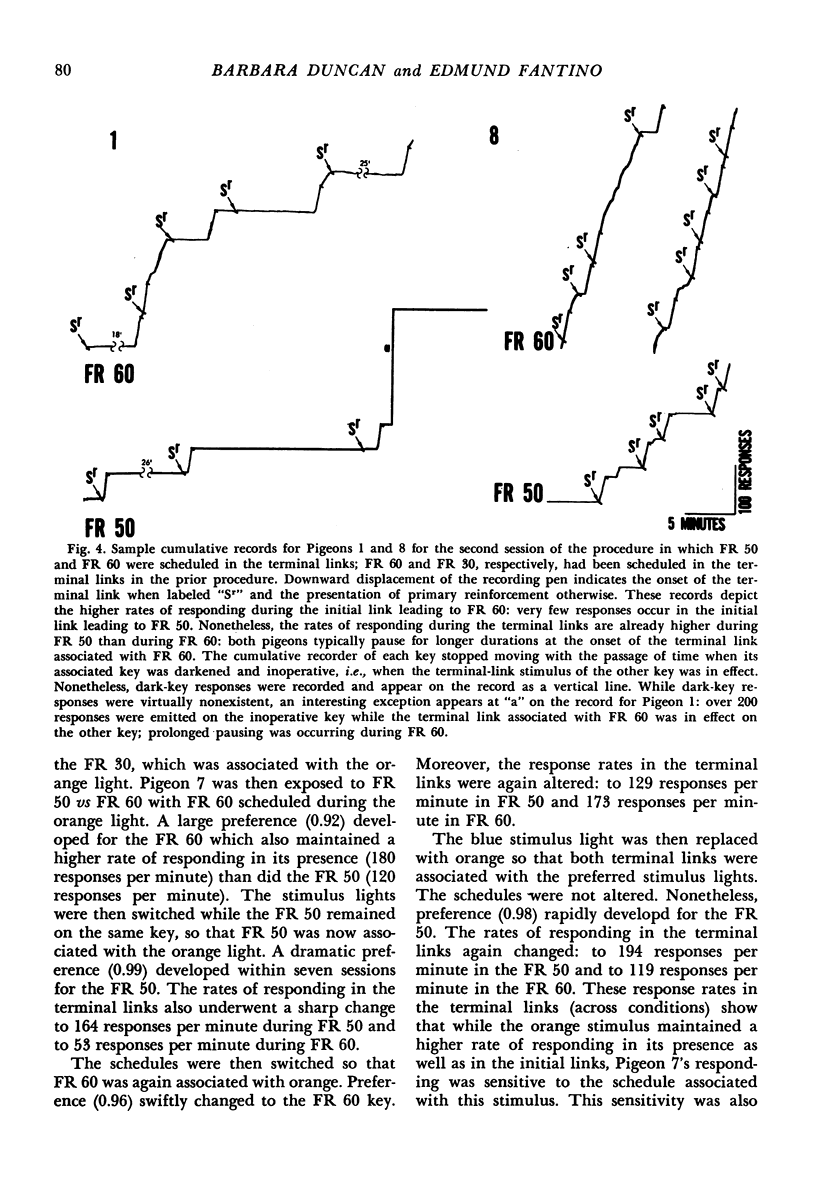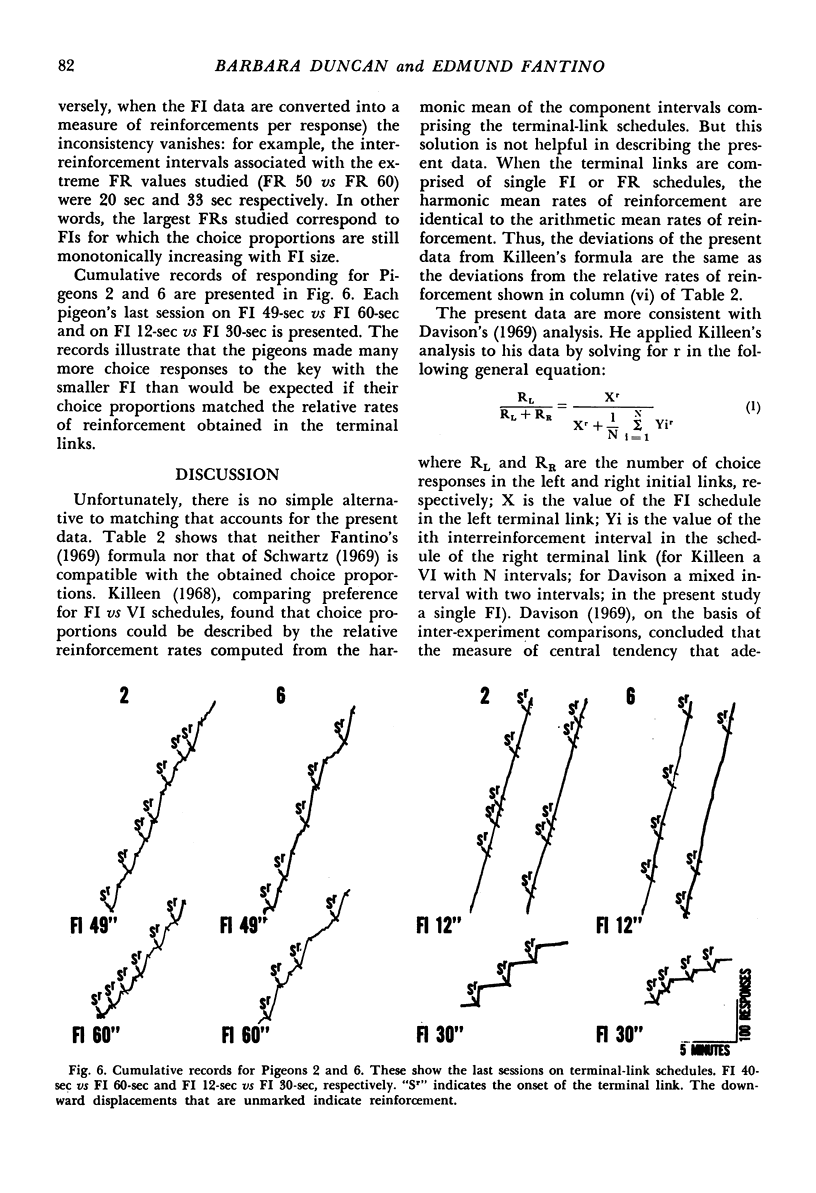Abstract
Pigeons' responses in the presence of two concurrently available (initial-link) stimuli produced one of two different (terminal-link) stimuli according to identical but independent variable-interval schedules. Responding in the mutually exclusive terminal links was reinforced with food according to fixed-ratio schedules for six pigeons and according to fixed-interval schedules for two pigeons. None of the pigeons matched the proportion of (choice) responses in the initial links to the proportion of the rates of reinforcement obtained during the terminal links. Instead, as the values of each of the terminal-link schedules were increased by a constant amount, the choice proportions for the stimulus associated with the smaller of the two values increased, even though the relative rates of reinforcement during the terminal links decreased. These results are incompatible with those from previous studies with aperiodic (variable-interval or variable-ratio) schedules. The present results do suggest, however, that in transforming aperiodic schedules into their periodic equivalents, it may be necessary to consider the size of the smallest interreinforcement interval comprising the terminal-link schedules.
Full text
PDF













Selected References
These references are in PubMed. This may not be the complete list of references from this article.
- Davison M. C. Preference for mixed-interval versus fixed-interval schedules. J Exp Anal Behav. 1969 Mar;12(2):247–252. doi: 10.1901/jeab.1969.12-247. [DOI] [PMC free article] [PubMed] [Google Scholar]
- Fantino E. Choice and rate of reinforcement. J Exp Anal Behav. 1969 Sep;12(5):723–730. doi: 10.1901/jeab.1969.12-723. [DOI] [PMC free article] [PubMed] [Google Scholar]
- Fantino E. Effects of required rates of responding upon choice. J Exp Anal Behav. 1968 Jan;11(1):15–22. doi: 10.1901/jeab.1968.11-15. [DOI] [PMC free article] [PubMed] [Google Scholar]
- Fantino E., Herrnstein R. J. Secondary reinforcement and number of primary reinforcements. J Exp Anal Behav. 1968 Jan;11(1):9–14. doi: 10.1901/jeab.1968.11-9. [DOI] [PMC free article] [PubMed] [Google Scholar]
- Fantino E. Preference for mixed- versus fixed-ratio schedules. J Exp Anal Behav. 1967 Jan;10(1):35–43. doi: 10.1901/jeab.1967.10-35. [DOI] [PMC free article] [PubMed] [Google Scholar]
- Fischer K., Fantino E. The dissociation of discriminative and conditioned reinforcing functions of stimuli with changes in deprivation. J Exp Anal Behav. 1968 Nov;11(6):703–710. doi: 10.1901/jeab.1968.11-703. [DOI] [PMC free article] [PubMed] [Google Scholar]
- HERRNSTEIN R. J. SECONDARY REINFORCEMENT AND RATE OF PRIMARY REINFORCEMENT. J Exp Anal Behav. 1964 Jan;7:27–36. doi: 10.1901/jeab.1964.7-27. [DOI] [PMC free article] [PubMed] [Google Scholar]
- Neuringer A. J. Effects of reinforcement magnitude on choice and rate of responding. J Exp Anal Behav. 1967 Sep;10(5):417–424. doi: 10.1901/jeab.1967.10-417. [DOI] [PMC free article] [PubMed] [Google Scholar]
- Schwartz B. Effects of reinforcement magnitude on pigeons' preference for different fixed-ratio schedules of reinforcement. J Exp Anal Behav. 1969 Mar;12(2):253–259. doi: 10.1901/jeab.1969.12-253. [DOI] [PMC free article] [PubMed] [Google Scholar]


